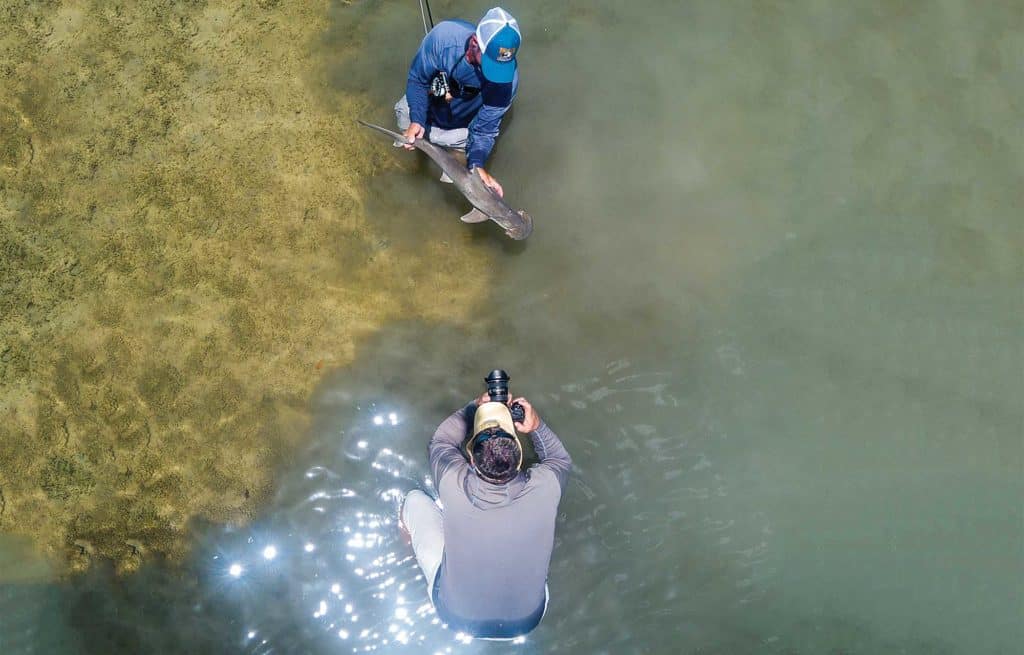
If you’re interested in consistently capturing pro-caliber images or simply looking to take a handful of fishing snapshots during an outing, here are a few essential things to keep in mind.
Be Ready
It costs nothing to fire away and shoot anything and everything. Wayne Gretzky once said, “You miss 100 percent of the shots you don’t take,” which applies to photography just as much as it applies to hockey. The more you shoot, the more you learn, and over time, you’ll capture some great images.
A camera at the ready is a camera that will be used. When a great shot opportunity presents itself, you don’t want to be digging for it in the bottom of a backpack or underneath the boat seat.
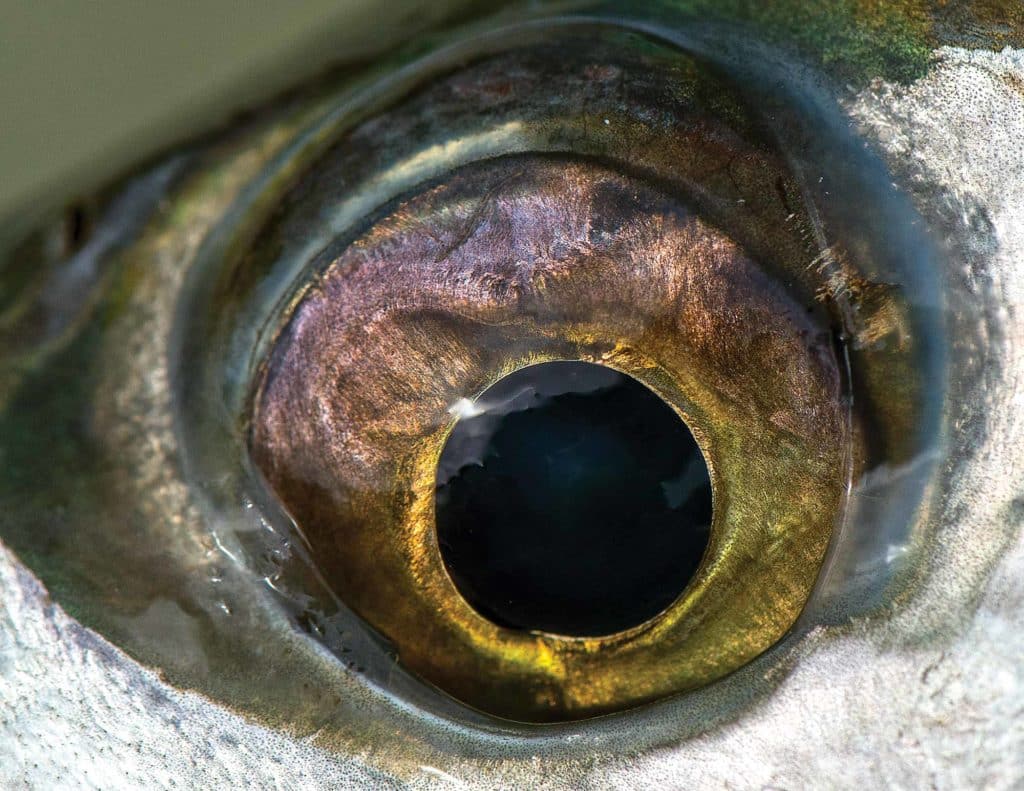
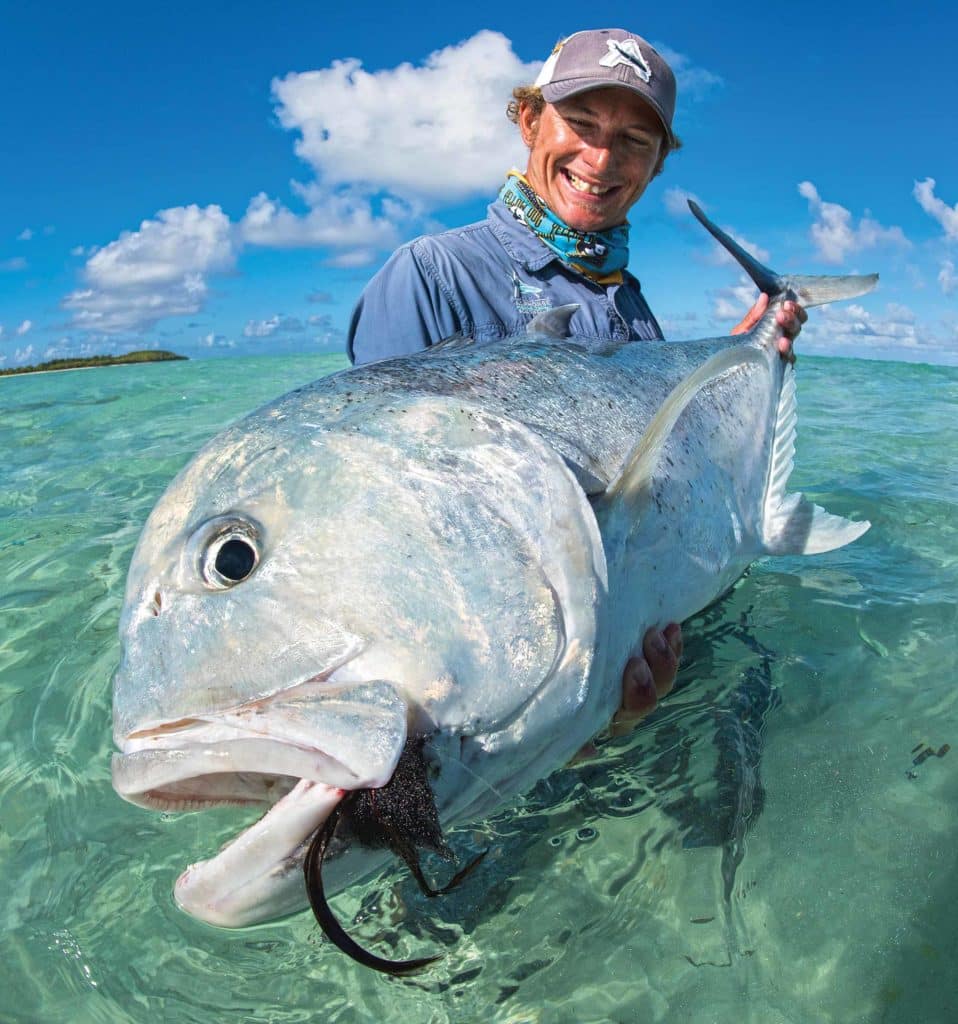
Outside the Box
We’ve all seen plenty of grip-and-grin photos: regular head-on shots of happy anglers posing with fish. While these shots can be fun mementos, they are rarely the shots that you end up hanging on your wall. Fishing photos can almost always be made better by setting up the shot creatively. Get down low in the water and shoot up, or climb to high ground or stand on the bow of the boat in order to shoot down. When shooting scenery, try doing it through branches, leaves or other structure to add elements to the foreground. Whenever the weather turns and things get nasty, try shooting the storm clouds, the steely gray light, or even the rain. If you want to add a different element to your photos, use a macro lens and capture the details: fingers tying on a hook, a well-stocked fly or lure box, or a close-up of a dorsal fin or tail. Imagine shooting a complete essay that tells an overall story; it will help you envision additional shots with a different focal point or shooting angle.
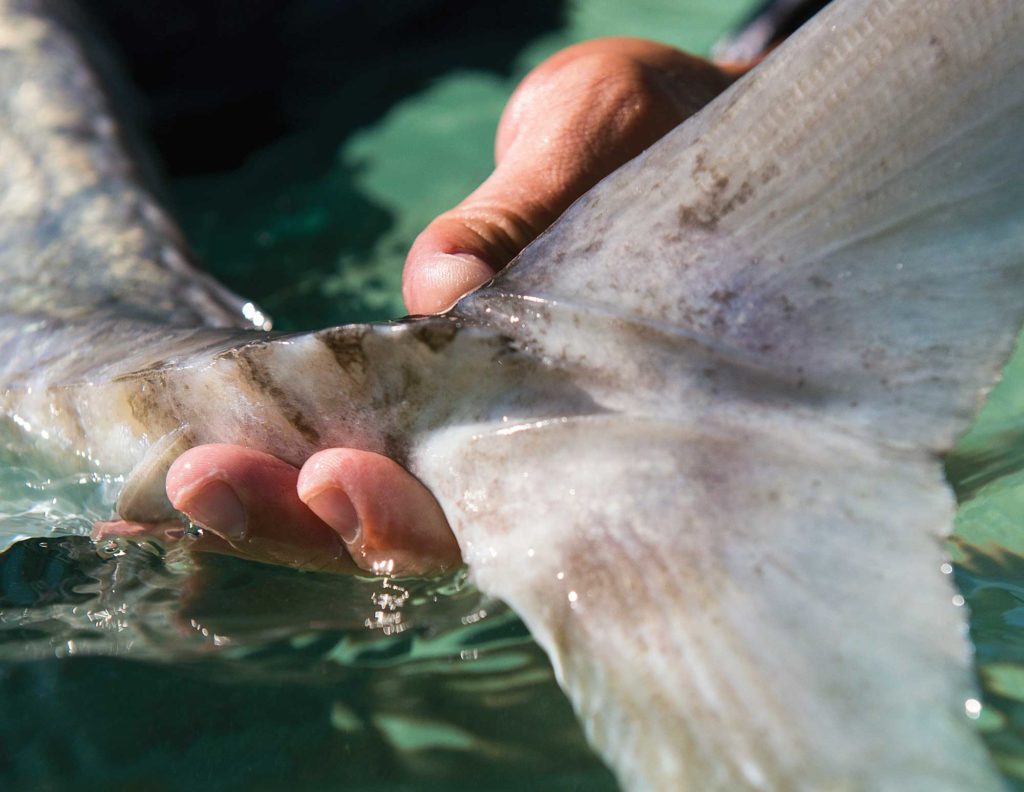
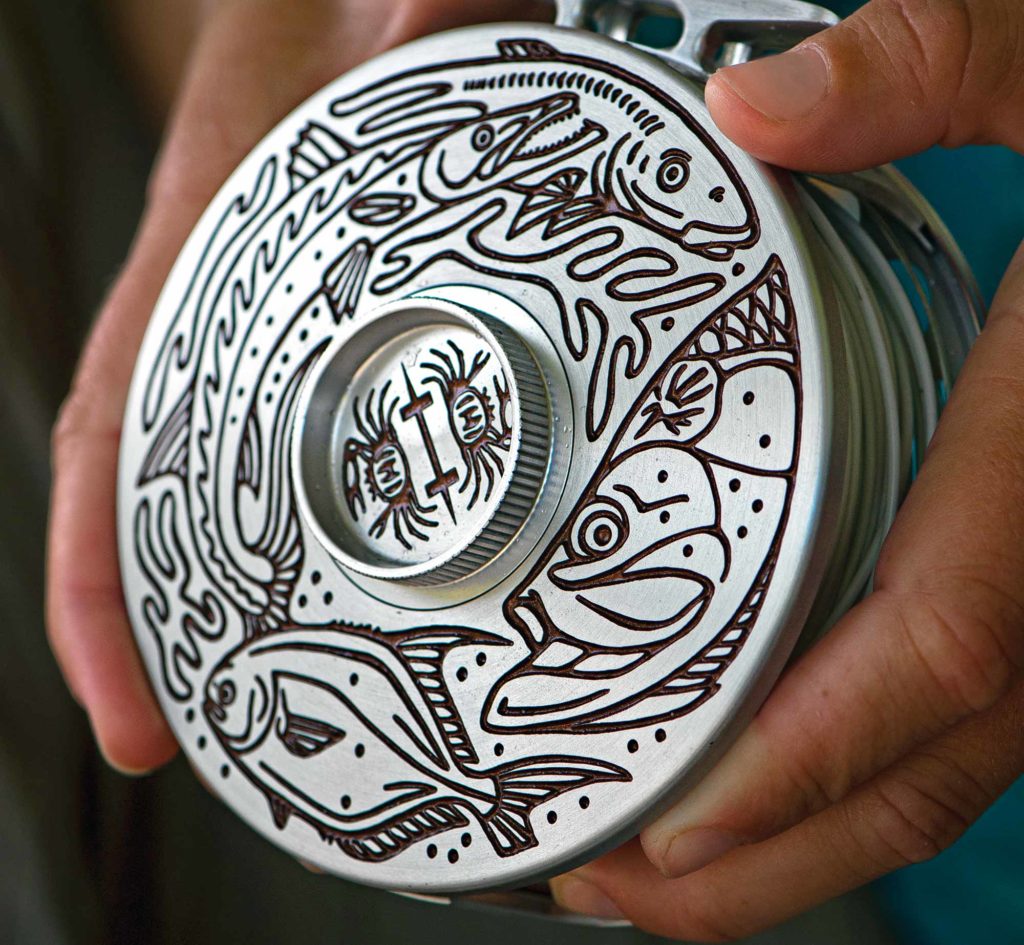
The Right Stuff
When it comes to capturing great photos, the first step is to simply shoot, which means taking advantage of what you already have. Don’t ever let what you don’t have keep you from shooting. There are many levels of equipment these days, and much like fishing gear, entry-level and midrange cameras and lenses have only gotten better. Regardless of how expensive your camera and lenses are, do yourself a favor and learn your gear inside and out. Read the manual and study your camera’s capabilities and features. These days, you’ll be amazed at the things a camera can do.
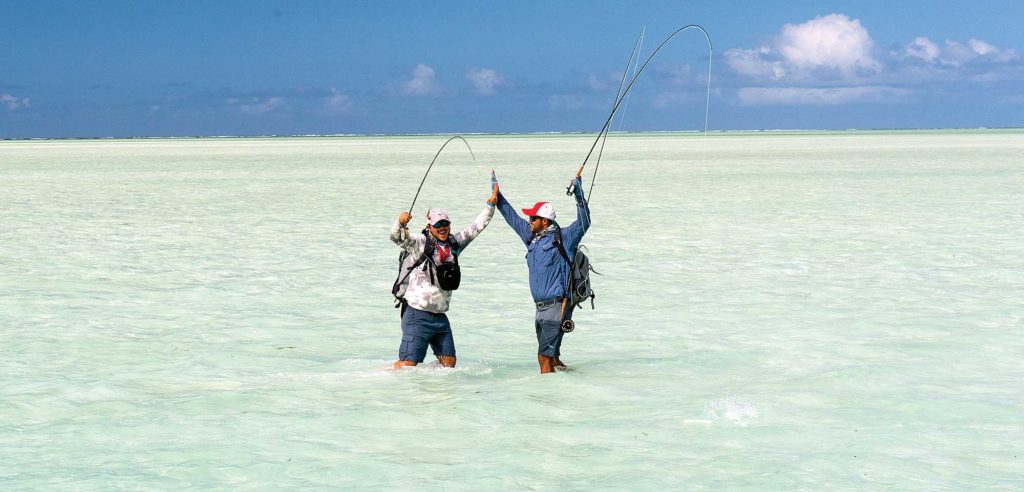
Consider Composition
Composition is key to great images. Take a moment to think about your shot and try to set things up to look good. If you’re shooting your buddy holding the fish of a lifetime, and there’s an old tire or a pile of garbage on the bank behind him, shift your angle so the distraction is not in the frame. If he’s wearing a goofy, floppy hat and a pair of goggle-size glasses, tell him to remove them. Conversely, if you’re shooting beautiful scenery, perhaps it would look better if your fishing partner waded out onto the flat to give the landscape more perspective. If you’re taking a close-up of a fish, don’t be afraid to get low and close to the water. Shoot a variety of angles and distances, and avoid the straight-at-the-side shot. Just prior to taking a picture, dip the fish in the water to capture the water dripping off the fish. This adds drama and life to the image.
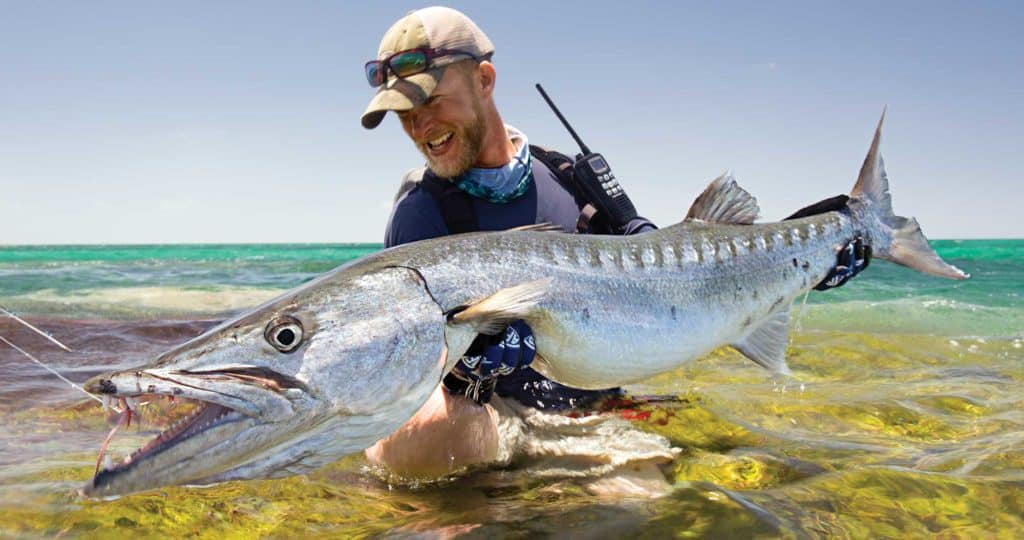
Stay Level
One of the most common mistakes people make with their photos is a crooked horizon. While there are times when you may want a crazy horizon angle in order to generate an artsy shot, most photos simply look better when you keep a level camera and capture an even horizon. Most DSLRs have a virtual horizon display similar to what you see in the cockpit of an airplane, and using it almost always results in better shots.
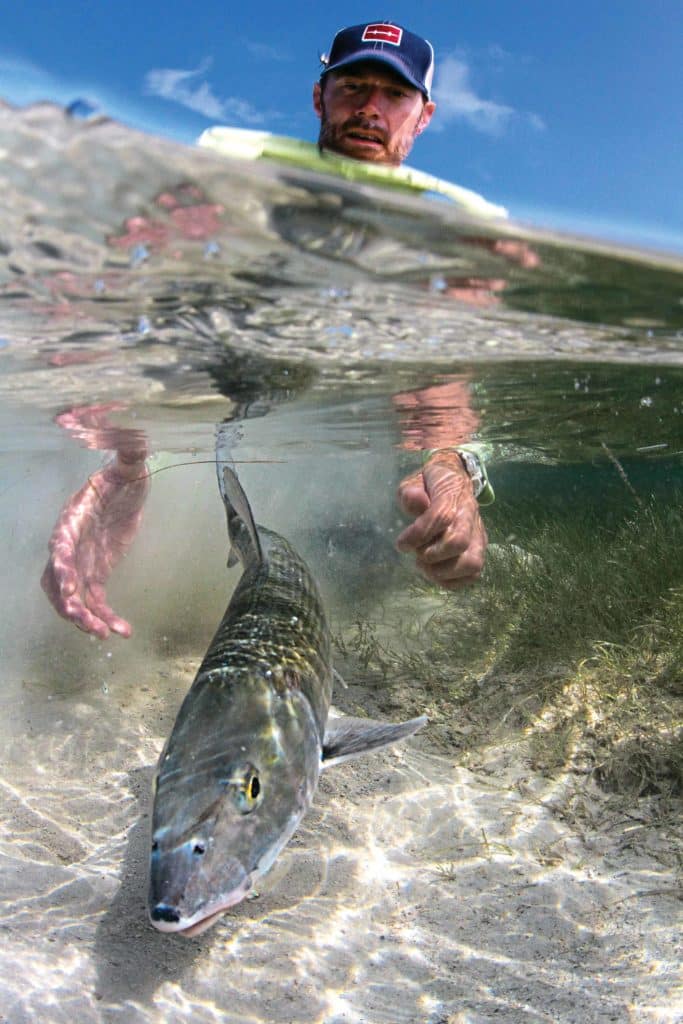
Grip-and-Grins to Be Proud Of
First, try not to take too many pictures of the angler holding the fish while looking directly at the camera. Shoot a few with the angler looking at the fish. A release pose is always a good shot. Whenever possible, include the rod, reel, boat, guide, and even other anglers to help tell the story.
On bright, sunny days, use the camera’s built-in flash to freeze the action and add light to the angler’s face, especially if he or she is wearing a hat. It also brightens colors on the fish.
Whenever possible, tilt the bill of fishing hats and visors back to allow more light on the subject’s face. Finally, make it quick if you plan to release your catch. Water surrounding a fish gives it much-needed support, so try not to lift the fish out of the water for too long — especially the big ones. Try holding your breath when removing a fish from the water; when you need to breathe, so does the fish. Shoot photos of the fish half in and half out of the water. When the photographer is ready, a quick — and brief — partial lift is all you need to capture the image.
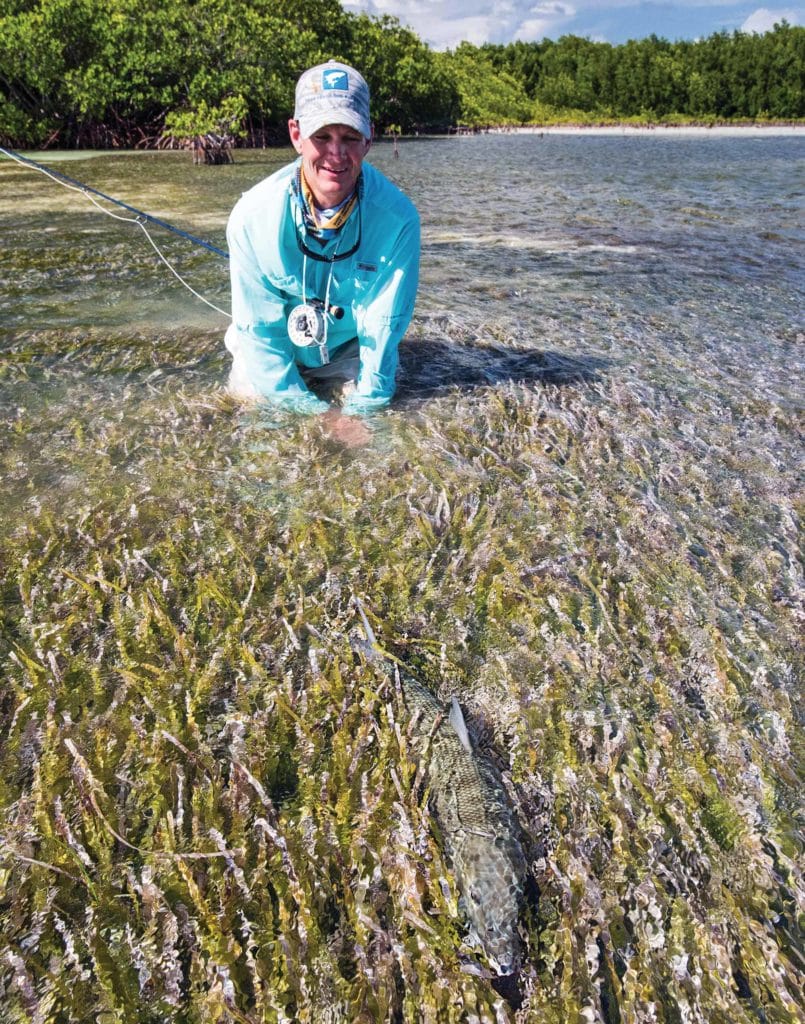
Use Natural Light
There is no substitute for beautiful, natural light. Always look for a light source first and then figure out a way that you can use it to improve your shot.
Do whatever it takes to shoot during the “golden hours” each day, when the light is soft and warm: roughly half an hour before sunrise or sunset until half an hour after. Shooting midday, when the sun is harsh and the shadows go black, usually results in mediocre images.
Protect Your Gear
When you shoot on and around salt water, be especially careful to protect your equipment. There is nothing better than a hard-sided Pelican-type case. If you’re hiking a shoreline or wading the flats, and a large case is too cumbersome, opt for a good waterproof backpack instead. A high-quality, absorbent lens cloth is a must-have, because raindrops or water sprayed from fish often become a factor.
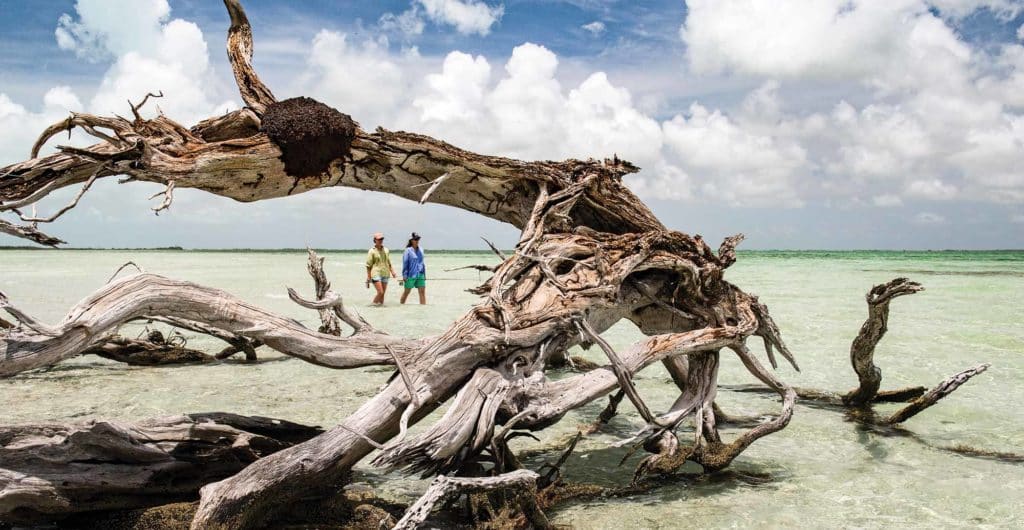
Point-and-Shoot VS. DSLR
Serious outdoor shooters still use a DSLR (digital single-lens reflex) camera body with a variety of lenses for different situations. A good piece of advice is to buy good glass, which means investing more in lenses than in your camera. A well-rounded lens kit might include a 24-to-70mm all-purpose lens, a 70-to-200mm telephoto lens for distance shots, a 16mm fisheye lens, and a 105mm lens for macro shots and close-ups. If you plan to buy only one lens, consider a good overall option, like the Nikon 18-to-200mm zoom or a comparable lens.
Read and Study
Training and education abound for photographers of all levels. A ton of websites feature great images and explain how the images were captured (camera setting, lens and location).
One great tip is to collect a handful of images you like and then try to replicate them. You never end up copying the same shot and instead end up with new ideas.
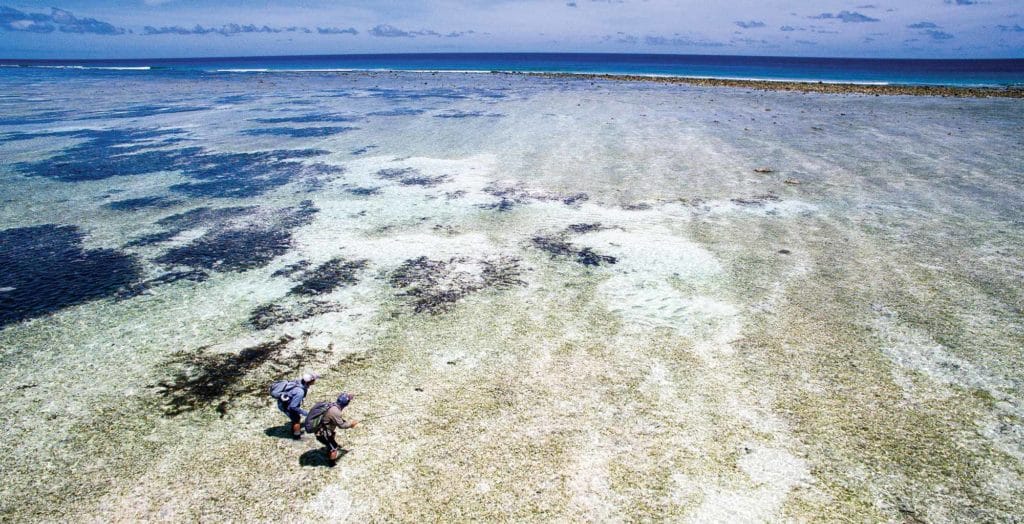
Tell a Story with Photos
Fishing is full of beauty, drama, action and anticipation, and there is always a story to be told in every trip. Frame pictures to include part of the scenery or the surroundings. Shoot the people and the equipment they are using. Include fishing tackle, boats and other anglers to tell the story. Shoot the journey, and include the “coming and going” and the things and people you encounter along the way.
In photography, just as in casting or reading water, practice makes perfect. Bring your camera with you everywhere you go so you always have it on hand, and above all, keep on shooting.
Shoot more than you have to or need to. In the digital age, you can always sort through your images later, keeping the best shots and deleting the rest, which is the way the pros work.

Quick Tips for Better Fish Photos
Position the sun behind or to the side of the photographer so the natural light is on the subjects (Photos 1, 2, 3, 4).
Frame pictures with scenery in the composition to document the location as well as the moment. (Photo 1).
Take several shots from different angles. You can always erase extra photos later.
Don’t take too many pictures of the angler holding the fish and looking directly at the camera (Photo 2).
Include the rod, reel, boat, guide, and even other anglers in the shot to tell the story behind the catch (Photo 1).
Use a fill flash to freeze the action and add additional light to the angler’s face. It also brightens colors on the fish.
Hats and visors should be tilted up or removed to allow light on the subject’s face. Remove sunglasses as well (Photo 2).
Just prior to taking a picture, dip the fish in the water. This adds drama, action and life to the subject (Photos 2 and 3).
A bright-color hat, bandanna or shirt adds vibrancy to an otherwise bland scene. Toss a red hat or bright shirt in your gear bag and wear it for a few pictures to add some color to your shots (Photo 2).
A polarizing filter removes glare and enhances the depth of colors, especially in the turquoise waters of many saltwater destinations (Photo 4).
Whenever possible, keep your lenses protected by a UV filter.









